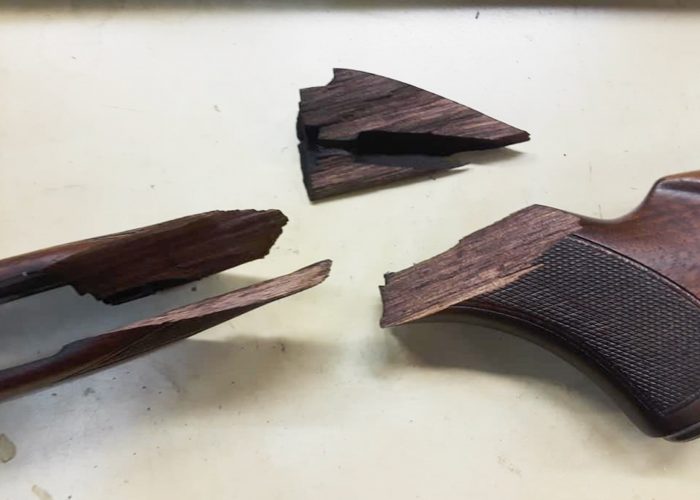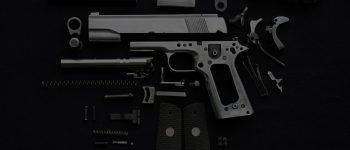Broken Stocks
Broken Stocks are a common problem encountered by Gunsmiths. After every hunting season, a parade of hunters bring broken stocks in for repair.
Skip Walters


Sign up to receive insider tips from our Master Gunsmith!
Broken Stocks are a common problem encountered by Gunsmiths. After every hunting season, a parade of hunters bring broken stocks in for repair. Sometimes, the guns have been dropped out of tree stands. These are usually the worst cases. If the stock is the only damage incurred, these guns can be put back into service with a replacement stock. If a replacement stock is not available, the wooden stock must be repaired.
If an amateur has tried to repair the stock, a “re-repair” is almost impossible. Usually, a stock that has been glued before must have all old adhesive removed before a successful repair is begun. If any of the original glue remains, the second repair will adhere to the old glue joint. Since the original glue failed, any subsequent adhesive applied to that joint will fail as well.
If all the pieces of the stock are present and not distorted, a three dimensional puzzle exists. The first step is to account for all the pieces and understand how they fit back together. Once the pieces are “dry fit”, examine the sequence of reassembly necessary to achieve the greatest strength and reliability/durability of the repair to be undertaken. Heavy recoil rifles will need extra strength and in some cases, a stock repair may not be safely feasible. Straight grained stocks have more strength than highly figured stocks, so the wood grain must be evaluated as well. Most stocks can be saved with properly placed reinforcing pins and epoxy that is usually used for glass-bedding. For reinforcing pins, I use degreased, coarse threaded screws with their heads removed. These are epoxied into the wood, perpendicular to the wood grain and the recoil forces which will be encountered when the gun is fired.
The voids created (to epoxy the pins in place) are always made from the “inside” of the stock, so they are not visible on the outside surface. Remove any oil from the wood with alcohol before creating the voids with a wood cutting burr. Remove all wood dust. “Dry fit” the pieces together as many times as needed to understand the necessary procedure. Complex breaks will require more than one epoxy session. Don’t try to epoxy the entire stock at once.
Mask the edges of the broken pieces with painter’s tape to avoid any excess epoxy on the exterior of the stock. This makes clean-up much easier.
Though I don’t like to promote a specific product, I used Acraglas and Acraglas gel to repair a Winchester 88 stock, with satisfactory results. Standard Acraglas was used to fit the wood pieces together, install the reinforcing pins and install a thin walled brass tube in the stock bolt hole to reinforce the stock. The Acraglas gel (which is more viscous) was used to fill any voids and rebuild the checkering so it could be restored, cut and blended. The wood color was matched with brown dye pigment added to the epoxy and alcohol based artist markers before the finish was applied.




